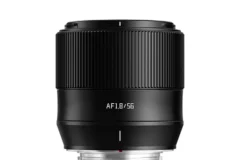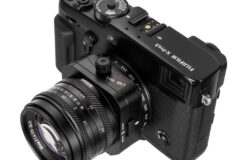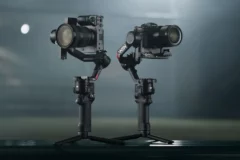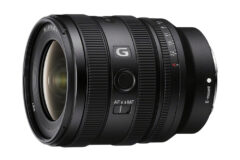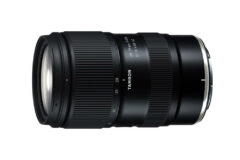Tamron Announces Development of Its Very First Micro Four Thirds Lens : Tamron 14-150mm f/3.5-5.8 Di III VC
Tamron has just announced the development of its first superzoom lens for Micro Four Thirds. The Tamron 14-150mm F/3.5-5.8 Di III VC has a 35mm equivalent focal range of 28-300mm, and features 17 lens elements in 13 groups and an aperture diaphragm with 7 rounded blades.
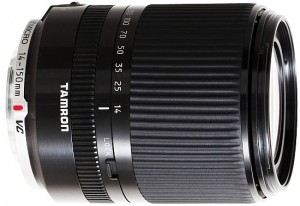
Tamron 14-150mm F/3.5-5.8 Di III VC (Model C001) with Tamron’s proprietary VC (Vibration Compensation)*1 mechanism and
sophisticated metal finish in two colors – black and silver
January 29, 2013, Saitama, Japan – Tamron Co., Ltd. (President & CEO: Morio Ono), a leading manufacturer of optical equipment, announces the development of a high-power zoom lens designed for Micro Four Thirds mirrorless cameras.
Product Features
- With one LD (Low Dispersion) glass element, two molded-glass aspherical elements and one hybrid aspherical element, Tamron’s new Micro Four Thirds high-power zoom lens delivers leading-edge high image quality by thoroughly compensating for aberrations.
- The ingenious optical design achieves a compact body with a filter diameter of just 52mm despite being equipped with the Tamron’s highly regarded VC (Vibration Compensation) mechanism.
- A stepping motor optimized for this model provides silent, quick and accurate auto focusing.
- This lens is equipped with Tamron’s acclaimed VC (Vibration Compensation) mechanism. The VC mechanism reduces image blur caused by camera shake to deliver sharp images. This makes it possible for hand-held shooting in any unstable position with extremely light mirrorless cameras. The VC is also optimized for movie images and smooth scenes.*2
- The metal lens barrel exterior is available in two colors: black and silver, providing the most popular color options to match high end cameras.
- Using a circular diaphragm*3, this lens achieves spectacular background blur effects.
*1 VC (Vibration Compensation) is Tamron’s proprietary image stabilization mechanism.
*2 The lens VC feature should be turned off, when used with cameras that have built-in image stabilization functions (such as those made by Olympus).
*3 The circular diaphragm retains a near circular shape even when taken two stops down from a wide open position.
Specifications
| Model | C001 |
| Focal length | 14-150mm (equivalent to 28-300mm in the 35mm/full-frame format) |
| Maximum aperture | F/3.5-5.8 |
| Lens construction | 17 elements in 13 groups |
| Minimum focus distance | 0.5m (19.7 in.) |
| Maximum magnification ratio | 1:3.8 (at f=150mm: MFD 0.5m) |
| Filter size | φ52mm |
| Length*1 | 80.4mm (3.2 in.) |
| Entire Length*2 | 85.24mm (3.4 in.) |
| Diameter | φ63mm |
| Weight | 280g (9.9 oz.) |
| No. of diaphragm blades | 7 (Circular diaphragm) |
| Minimum aperture | F/22 |
| Standard accessory | Flower-shaped lens hood |
| Compatible mount | Micro Four Thirds |
*1 Length is the distance between the mount face and the tip of the lens.
*2 Entire length is the distance between the tip of the lens and the tip of the protrusion.
This product conforms to the “Micro Four Thirds System Standard” established by Olympus Imaging Corporation and Panasonic Corporation.
Micro Four Thirds™ and the Micro Four Thirds logo marks are trademarks or registered trademarks of Olympus Imaging Corporation, in Japan, the United States, the European Union and other countries.
The company names and product names in this document are the trademarks or registered trademarks of their respective owners.
About the stepping motor
The stepping motor’s actuator allows finely tuned control of angular rotation, and since it drives the focusing mechanism directly without an intermediate reduction gear, it also provides superbly quiet performance.
VC (Vibration Compensation)
Tamron’s VC mechanism employs a three-coil system, whereby three driving coils activate the shake-compensating VC lens group electromagnetically via three ceramic balls. The VC lens elements are held in place only by contact with the ceramic balls, achieving smooth movement with little friction. This provides a stable viewfinder image with excellent tracking performance. As the VC lens can be moved in parallel only by electrical control, the mechanical structure is simple, enabling downsizing of the lens body.
